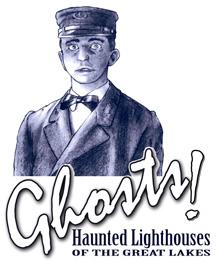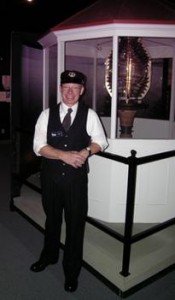History and Legend
- Share
- Tweet
- Pin
- Share

“When you get to the end zone, act like you’ve been there before.”
A recent television commercial attributes the quote above to legendary Green Bay Packer coach Vince Lombardi. He’s not alone in having these words included in the body of work that makes up his storied past. Other football legends credited with this same quote include Paul “Bear” Bryant, Barry Sanders, Paul Brown, Bob Devaney, and Joe Paterno, to mention just a few.
So what does all of this have to do with the Maritime Museum you ask? This is just one small example of the challenges that all historians face when researching the life and “legend” of a celebrated individual. This same demand applies to research of historic places and events – what is fact and what is legend?
As the curatorial staff and Exhibits & Collections Committee began their planning for the museum’s new temporary feature exhibit, “Ghosts! Haunted Lighthouse of the Great Lakes,” they faced the intriguing intellectual question of how to properly deal with a subject that is primarily legend. No easy task. Equally important, they needed to be concerned with all the nuances of how, or if, the exploration of the supernatural fits into the Maritime Museum’s mission of preserving or celebrating the wonderful maritime history of the Door Peninsula.
The dictionary defines legend at “a non-historical or unverifiable story handed down by tradition from earlier times and popularly accepted as historical.” So how does a history museum address legend?
There are a couple schools of thought among historians when dealing with legend. The most rigid camp discounts and refuses to repeat any unverifiable fact. I personally believe, as do many historians, that the legend tied to a person, place, or event is an essential element of overall “history” – in many ways fact and legend are inseparable. The mystique and popularity of historic figures like Benjamin Franklin, Daniel Boone, Davey Crocket, and even George Washington, are equal measures of fact and legend.

Lighthouse Keeper Bob stands watch at the Maritime Museum.
This proper blending of fact and legend is the backdrop that makes the Maritime Museum’s new “Haunted Lighthouses” exhibit both fascinating and fun.
An incredible number of Great Lakes lighthouses have a “haunt” as an essential component of their uniqueness – including local lights at Sherwood Point, Chambers Island, and Pottawatomie Light on Rock Island. I suspect that their remoteness on bits of the rugged coastline coupled with the habitation by the storied, steadfast light keepers makes them ripe for tales of ghosts and apparitions. Not unlike the castles of Europe, these enduring fortress-like structures are ideal venues – what could be spookier than an isolated lighthouse tower on a dark and stormy night? If you have ever been alone in a secluded lighthouse, you know that it takes very little imagination to start to conjure unexplained movements and sounds – or is something more than imagination?
The exploration of these unexplained phenomena is the essence of the new exhibit. The sheer variety of manifestations is beguiling – everything from the smell of a former keeper’s Cuban cigar, to ghostly cats, to a helpful phantom that cleans up and does the dishes. In addition to recreating a few of the apparitions, the exhibit explores the building blocks of reality and how human perception can sometimes be “tricked” by optical illusion – or the ever-present human imagination. Visitors can test their psychic abilities and the acuity of their sense of smell. For younger guests, there is a wardrobe of 1880’s period clothing essential for a grandparent-pleasing photo op. Exhibits in the wheelhouse of the historic steam ship Elba examine sailor superstition and several of the “Flying Dutchman” ghost ships that haunt the waters of the Great Lakes. And of course, there is an ample quantity of good old-fashioned lighthouse history.
No matter your level of belief (or disbelief) in the paranormal, you’ll undoubtedly enjoy how “Ghosts! Haunted Lighthouses of the Great Lakes” blends scientific fact, history, and legend in a comprehensive treatment of the topic. While ghosts do appropriately appear in various locations, the exhibit is not a “haunted house.” Despite this more academic treatment of the subject of the paranormal, the new exhibit is never the less fun for all ages, and you’ll come away having “accidentally” learned a lot about maritime history.
In addition to learning much about the history of Great Lakes lighthouses, we hope you’ll come away with a new appreciation for the amalgamation of hard fact and captivating stories that form the identity of historic persons, places, and events. When next you use the word “legendary” to describe someone or something, i.e. legendary football coach Vince Lombardi, you’ll understand the complexities of that oft-used title. As for me, I hope that legendary is a title that I someday deserve. Onward and upward!
Peninsula Arts and Humanities Alliance, Inc., is a coalition of non-profit organizations whose purpose is to enhance, promote and advocate the arts, humanities and natural sciences in Door County.



